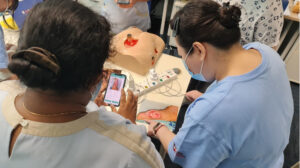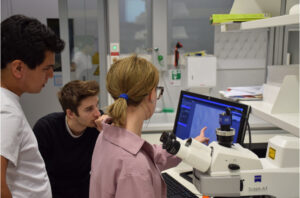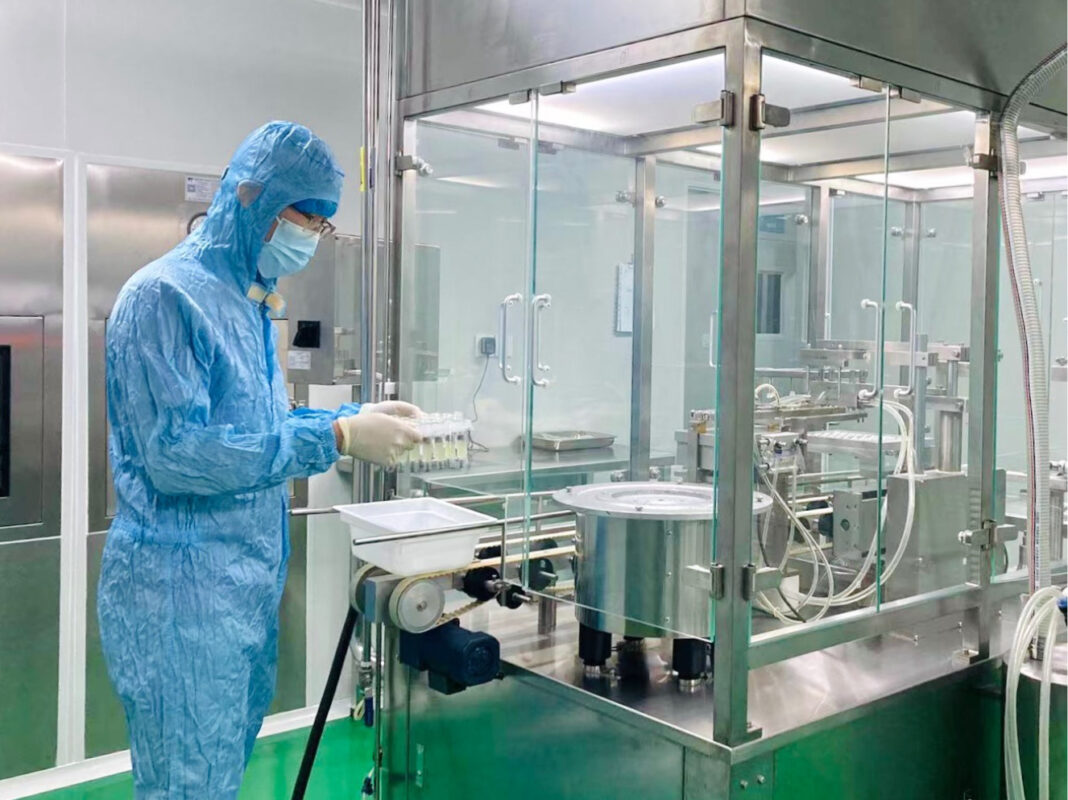A market study by Precedence Research estimated that the global dermatology market size to be $1.59 billion in 2022, growing to $3.14 billion by 2032. Skin disorders, including chronic diabetic wounds and psoriasis, are highly challenging to treat due to the involvement of multiple cell types (fibroblasts, keratinocytes, and immune cells) and limited understanding of disease progression in humans.
But startups in Asia Pacific are now tackling skin disorders using solutions such as biomaterials and artificial intelligence (AI), and international skin consortiums have formed to bridge academic and industry in new collaborations.
Singapore startup Cuprina has developed MEDIFLY, a flagship product using sterilized maggots to remove necrotic tissues and promote wound healing. Maggot debridement therapy (MDT) is particularly effective in managing chronic and non-healing wounds such as diabetic foot ulcers and pressure, explains company founder Carl Baptista. 
“MEDIFLY maggots demonstrate a remarkable ability to selectively consume necrotic tissue,” says Baptista, who is also the company’s CTO. “They achieve this through the secretion of proteolytic enzymes, facilitating the removal of dead tissue, bacteria, and biofilms, thus promoting wound healing and granulation tissue formation.”
Besides MEDIFLY, Cuprina has also developed ANURAN SP1, a type 1 collagen wound dressing derived from discarded bullfrog skins. This potential treatment is licensed from the Nanyang Technological University, which innovated a remarkable technique for extracting collagen from discarded bullfrog skins that not only preserves the collagen’s triple helix structure but also enables the transformation of the purified collagen into sponge forms through a streamlined method. The material is currently under regulatory review and preparation for Phase I clinical trial.
“The collagen dressing is pivotal in the next healing phases after MEDIFLY to encourage fibroblast attachment, the development of extracellular matrix components, and the formation of new blood vessels,” according to Baptista. “This acceleration of granulation prepares the wound for the final healing stage in speeding up wound closure and minimizing scarring.”
Baptista says that their future strategy includes expanding MEDIFLY’s reach to the rest of Southeast Asia, Middle East, and China, and enhance its brand and solutions through strategic partnership with a focus on sustainability and integrating botanical actives into their products to elevate clinical performance.
Hydrogel to accelerate wound healing
Lingel Tech, a China-based startup based incorporated in 2017, focuses on wound care and regenerative medicine. The core technology of the company is the use of photo-crosslinked hydrogels as wound dressings, tissue sealants, adhesives, and hemostats.
“With our novel photo-crosslinked technology and wet tissue adhesive technology, we can crosslink and adhere hydrogel in situ, meaning that the hydrogel can form instantly and adhere to wound firmly with light stimuli at the application site,” says Linyong Zhu, PhD, professor at Shanghai Jiaotong University, whose lab developed the photo-crosslinked technology. “The advantage of this is that the hydrogel can be used for bonding and fixing skin incisions. Compared to the routine cyanoacrylate glue, our hydrogel-based tissue adhesive is more biosafe without the occurrence of adverse events. It can also align the skin wound accurately and reduce wound tension, thus preventing scar formation.”
Zhu adds that their hydrogel technology is also helpful to seal irregular wounds and promote wound healing via moist wound healing mechanisms. “Compared to other wound dressings, such as films, foams, hydrocolloids, and alginates, the hydrogel could relieve pain, reduce dressing changing frequency, and accelerate healing progress.”
Currently two of the company’s photo-crosslinked hydrogel-based products have completed validation tests and multi-center trials. In particular, the photo-crosslinked hydrogel dressing has received consideration under the Special Examination and Approval Procedures for Innovative Medical Devices from China Food and Drug Administration (CFDA) in 2023.
“The two products are expected to get full CFDA approval in following two years and applied in clinical practice gradually in following five years,” says Zhu. “We hope that this innovation will bring vitality to the field of wound management.”
AI for wound monitoring and management
As a result of the rapidly aging population and high prevalence of diabetes in developed countries, the rate of wound occurrence is rising. Many wounds become chronic due to difficulty in monitoring, leading to a rise in hospitalization due to non-healing wounds and infections.
According to Li Lian Ng, a co-founder of Tetsuyu Healthcare, a Singapore-based startup developing affordable solutions for the intermediate and long-term care sector, this problem motivated the company to develop AI solutions for automated measurement and wound tissue assessment.
“Compared to competitive approaches our process takes under one second, which is fast,” said Lian Ng. “Validation performed by Tan Tock Seng Hospital shows a high level of accuracy in wound measurements benchmarked against qualified clinicians. Quality is also improved due to standardization in data captured as well as embedded workflows. This allows junior care staff to manage the wound in a guided manner while senior clinicians can monitor progress remotely and early interventions can be ordered to improve the healing potential of the wounds.”

CARES4WOUNDS, an AI-enabled wound monitoring system commercially launched in 2020, is listed in the Health Sciences Authority (Singapore) as a Class B Medical Device. It also has a CE Mark. It is being adopted by a growing number of community care providers in Singapore and Hong Kong.
“Based on feedback by users, we see up 11x improvements in productivity for wound assessment with the app, and an overall 2.65x time- and cost- saving for wound management. Moving forward we are introducing new user-interface enhancements and continuing with R&D to improve the app capabilities to capture circumferential wounds dimensions. We have also just released a Foot- at-Risk screening prototype app to help patients prevent wounds from happening through regular self-screening,” adds Lian Ng.
Global skin consortiums support translations and talent training
To meet the growing demand for dermatological solutions, countries worldwide have established skin-related consortiums to consolidate research efforts, connect academic solutions with industry, and develop new talent for this rapidly growing industry.
One of such examples is SKINTEGRITY.CH, a nation-wide initiative in Switzerland, that aims to tap interdisciplinary and collaborative research to gain a better mechanistic understanding of skin repair and disease, and to develop novel approaches for enhanced diagnosis and treatment of impaired wound healing and inflammatory and malignant skin diseases. As the third pillar of its mission, the consortium also uniquely provides interdisciplinary training for the next generation of scientists, clinicians, and engineers.
A goal of SKINTEGRITY.CH is to train the new generation of scientists, clinicians, and engineers in interdisciplinary approaches for careers in the broad area of skin research and dermatology.
“For instance, through the Young Investigator Program, organized by a committee of PhD students and postdocs, 60-70 young investigators participate in training workshops to learn new experimental techniques and grow their professional skills and networks,” says Maarten Schledorn, scientific coordinator of SKINTEGRITY.CH. “Collaboration with tech transfer departments at the involved universities greatly supports the navigation of intellectual property concerns in these engagements.”

He adds that principal investigators in the consortium have successfully established several startups. “Collaboration with tech transfer departments at the involved universities greatly supports the navigation of intellectual property concerns in these engagements.”
Besides SKINTEGRITY.CH, other large skin-related research hubs include the Cutaneous Biology Research Center at Massachusetts General Hospital and the Skin Research Institute of Singapore, which develop technologies against skin aging, cancer and inflammation.
Schledorn notes that principal investigators in the consortium have successfully established several startups. “Collaboration with tech transfer departments at the involved universities greatly supports the navigation of intellectual property concerns in these engagements.”
Besides SKINTEGRITY.CH, other large skin-related research hubs include the Cutaneous Biology Research Center at Massachusetts General Hospital and the Skin Research Institute of Singapore, which develop technologies against skin aging, cancer and inflammation.
The growing market for skin disorders makes it crucial for academic researchers to consider how their solutions can be commercialized to benefit patients and clinical service providers. Funding agency support is needed, and consortiums play an important role in bringing like-minded players together to identify problems, generate solutions, and create impact through product translations and talent develop.
Andy Tay, PhD, is a freelance writer based in Singapore.


